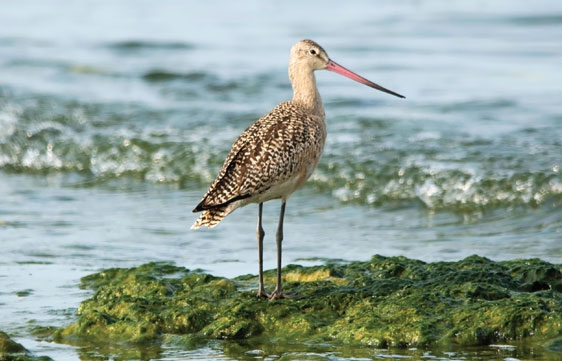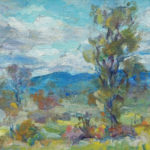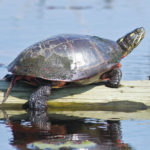
EVERY YEAR, SHOREBIRDS UNDERTAKE REMARKABLE MIGRATIONS that take them from the sub-Arctic tundra where many of them nest, to as far south as Argentina and back again. Because of the variety of wintering grounds and nesting sites, spring and fall shorebird migration is almost a continuous event in Ontario. There is only a short period in June when we may not see any migrating shorebirds at all. Just when the last of the north bound shorebirds pass through in late June, the early southern migrants show up on our shores in early July.
The adult yellowlegs, dowitchers and Least sandpipers, winging their way southward, are the first to appear on the scene. The migration comes to a peak in August and gradually tapers off, but numbers build up again as the juveniles, without parents to guide them on their migration, join the adults on local beaches and wetlands. By October, the shorebird numbers decrease and only a few trickle into November.
So, what attracts shorebirds to staging areas where the smell of rotting algae assails the nostrils? They’re hunting for maggots – Diptera fly larvae and the larva of other invertebrates – in amongst the mats of rotting algae that accumulate in mud flats, sewage lagoons and along the shoreline. The constant wave action along the beach and the seiches – temporary disturbances or oscillations in the water level of a lake or partially enclosed bodies of water – create vernal pools and mudflats, that are the breeding grounds for invertebrates and a rich food source for the shorebirds. Birders become very skilled at monitoring conditions and following these habitats around as shorebirds move from one feeding ground to other feeding grounds as conditions dictate. Shorebirds are quick to find any new feeding grounds that become available.
On some of the more reliable beaches in the area, it is not uncommon to view 20 of the 35 or so species of the shorebird family during the migration period. There are excellent opportunities to view shorebirds at Presqu’ile Provincial Park, and there are some good spots in Prince Edward County that are quickly coming into their own – the Kaiser Crossroad flooded cornfields, and the wetlands along the South Shore Important Bird Area. However, any beach, wetland, sewage lagoon or mud flat will harbour a few species. Farm ponds and flooded agricultural fields are also potential shorebird watching areas.
Shorebird identification can be a challenge. Many shorebirds show plumages that field guides fail to depict. In July and August, the adults will have worn, alternate (breeding) plumage, and molting adults can appear dishevelled with a mix of alternate and basic (winter) feathers. The first juveniles come on the scene in fresh juvenal plumage but later arrivals may be more faded and worn as they gradually molt to their first basic (first winter) plumage. It’s confusing at times, but fun. In fact, fellow birders will agree that spotting the one or two rarities is a most rewarding experience!
Story by:
Terry Sprague




